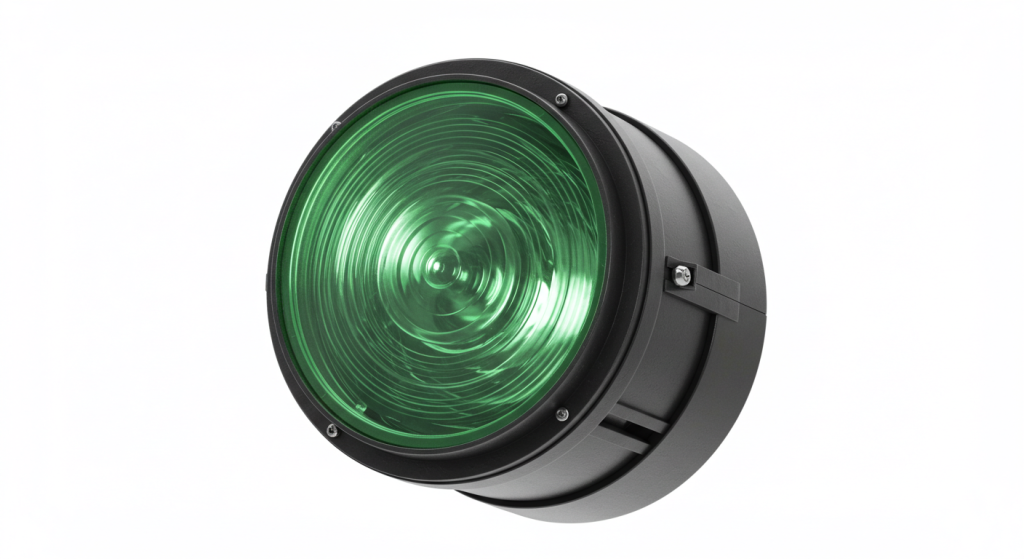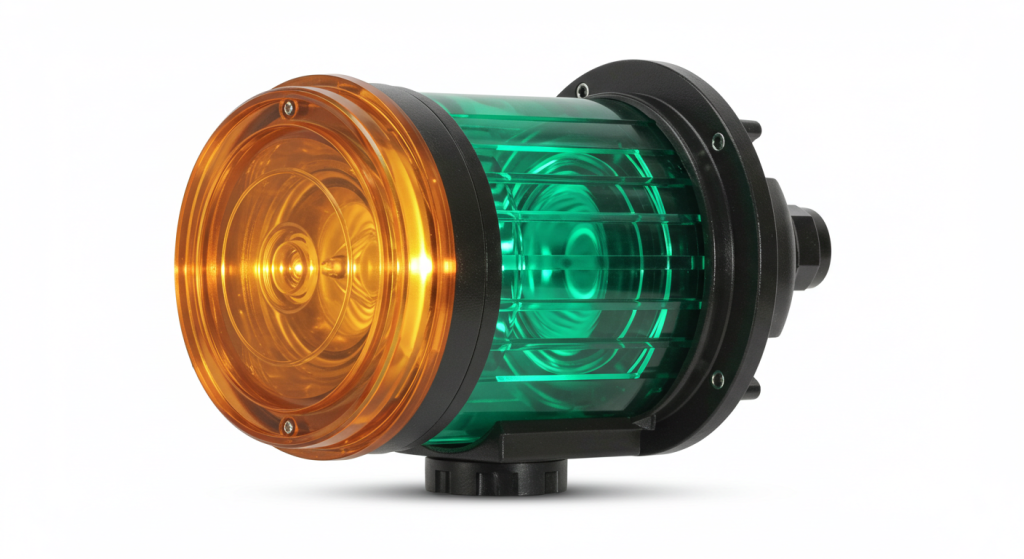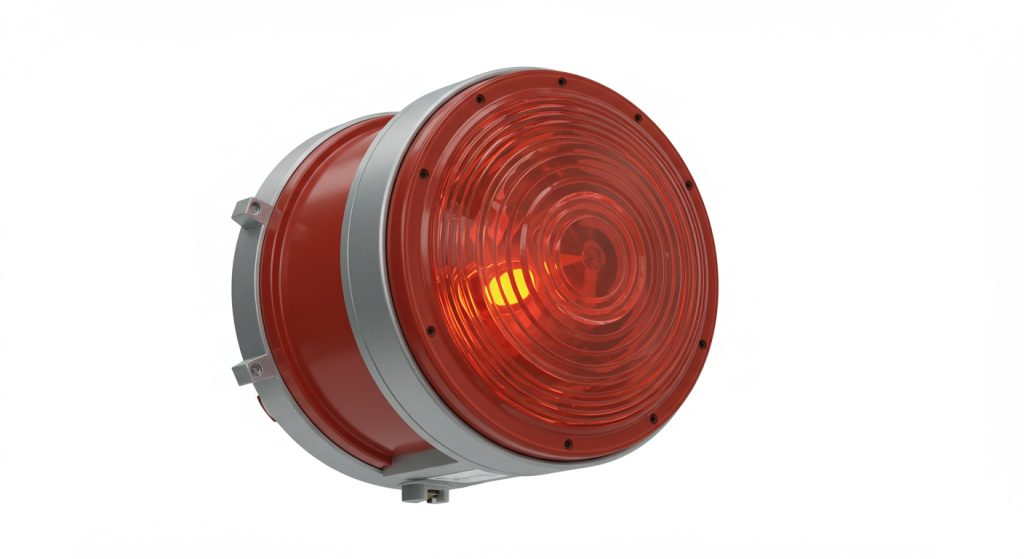The importance of obstacle warning is self-evident in the rapidly developing fields of transportation and construction today. As a key warning device, the controller of the solar obstacle light is like a heart, controlling the efficient operation of the entire system. From towering skyscrapers to lighthouses in the vast ocean, from communication base stations in remote mountainous areas to busy urban overpasses, solar obstacle light controllers are silently playing a role in ensuring safety and demonstrating vigorous development potential in the market wave.

Application Case Analysis
Aviation safety guarantee: Warning of airport surrounding facilities
Surrounding the international airport, numerous towering buildings such as skyscrapers, chimneys, and water towers stand tall. For example, a logistics and warehousing center near Beijing Daxing International Airport has a height exceeding the aviation height limit regulations and must install obstruction lights as required. The solar obstacle light system equipped here adopts advanced intelligent light control and timing control technology for the controller. During the day, the ambient light sensor detects strong light, and the controller puts the obstacle lights in standby mode to save battery power; In the evening, as the light weakens, the controller automatically turns on the low intensity red flashing mode, flashing 60 times per minute, which meets the nighttime aviation warning standards. Moreover, in case of sudden heavy fog weather, the controller connected to the meteorological station data network can receive information and switch to a flashing mode with high light intensity and strong penetration, ensuring that pilots can clearly identify obstacles even under complex weather conditions. Through precise control, the collision risk during aircraft takeoff and landing is effectively avoided, ensuring the safe operation of airport airspace.

Navigation assistance for navigation: offshore lighthouses and drilling platforms
A offshore drilling platform in the East China Sea is located far from land, and laying cables for power supply is costly and difficult to maintain. Solar obstacle lights have become an ideal choice, and their controllers have strong environmental adaptability. Faced with strong winds, high humidity, and salt spray erosion at sea, the controller casing is made of corrosion-resistant aluminum alloy material, and the internal circuit board is treated with moisture and salt spray resistance. It can arrange battery charging and lighting operation time reasonably according to the tidal fluctuations and changes in sunlight. Fully charge the battery during the day when there is ample sunlight; At night, the high-intensity white obstacle lights on the lighthouse flash at a frequency of 30 times per minute to guide passing ships. Even in severe sea conditions such as storms, they still work stably, like a guardian star at sea, greatly reducing the possibility of ships hitting reefs and colliding with offshore facilities, ensuring the safety of maritime transportation and operations.
High mountain communication base station protection: remote area warning application
A communication base station located in the mountainous area of the the Yunnan-Guizhou Plateau is built on the top of the mountain, with unstable municipal power supply and high cost. The solar obstacle light system is installed here, and the maximum power point tracking (MPPT) technology of the controller shines brightly. The climate in mountainous areas is variable, with frequent cloud cover and rapidly changing light intensity. The controller utilizes the MPPT algorithm to adjust the operating point of the solar panel in real time, ensuring efficient acquisition of electricity under different lighting conditions, and improving power generation efficiency by about 20%. Accurate battery charging management extends battery life and reduces replacement frequency. The obstacle lights provide clear warnings for low altitude flying helicopters, drones, etc. during the day and night according to the set flashing mode, ensuring the safe operation of communication equipment and providing reliable visual identification for low altitude flying activities such as emergency rescue in mountainous areas.

Wind power generation field
In the field of wind power generation, solar obstacle light controllers play an important role. Due to the fact that wind energy facilities are typically located in remote areas and have high maintenance costs, using solar energy as the primary energy supply can significantly reduce operational and maintenance costs. For example, a solar obstruction light controller can ensure that wind turbines are clearly recognized by pilots at night or in low visibility conditions, thereby avoiding collision accidents.
Market Prospects
Growth opportunities driven by policies
With the increasing global emphasis on aviation and maritime safety, countries have introduced strict regulations to mandate the installation of warning signs on specific obstacles. For example, the newly revised aviation safety directive of the European Union has refined the classification of obstacle heights and corresponding obstacle light standards, which directly stimulates the market demand for solar obstacle lights and their controllers. In China, the Civil Aviation Administration of China has strengthened its control over airport clearance protection zones, requiring new buildings to be equipped with compliant obstacle light systems and requiring old facilities to be renovated within a limited period of time. This has opened up a broad domestic market for solar obstacle light controller manufacturers, and it is expected that the demand for related products in the domestic aviation industry will grow at a rate of 15% per year in the next five years.
The wave of new energy helps expand the market
Against the backdrop of global advocacy for green energy, solar energy, as a representative of clean energy, continues to expand its application areas. Solar obstacle lights, with their own advantages, have become the preferred warning solution for new buildings, offshore facilities, and other constructions. Compared with traditional city power supply obstruction lights, solar obstruction lights do not require complex cable laying, reducing construction costs and environmental damage, and are in line with the concept of sustainable development. According to the International Energy Agency (IEA), the proportion of solar energy in distributed energy applications will increase year by year in the future. As a key component, solar obstacle light controllers are expected to expand their market share, especially in the process of accelerating infrastructure construction in developing countries, where demand will experience explosive growth.
Technological innovation empowers the high-end market
On the one hand, with the integration of IoT, big data, and artificial intelligence technologies, solar obstacle light controllers are moving towards the era of intelligence. Intelligent controllers can achieve remote monitoring and diagnosis, and transmit real-time information such as the working status of obstacle lights, battery power, and lighting data to the monitoring center through wireless networks. Operations personnel can monitor the equipment situation without leaving their homes, promptly detect faults, and perform remote repairs. This intelligent product is highly favored in high-end markets such as large airports and ports. Currently, the market penetration rate of high-end intelligent controllers in developed countries in Europe and America has reached 30% and is on the rise. On the other hand, new battery technologies such as lithium-ion batteries have made breakthroughs in energy density and charge discharge life, as well as more efficient MPPT algorithm research and development, which have improved the overall performance of solar obstacle light systems and further expanded the application of controllers in complex environments and long-term operating scenarios, meeting the stringent requirements of high-end customers for reliability and efficiency and raising the market ceiling.
Exploring unlimited potential in segmented markets
In addition to traditional aviation, navigation, and construction fields, solar obstacle light controllers have shown unique value in some emerging niche markets. For example, in the wind power industry, wind turbine towers are towering and obstacle lights need to be installed around them. As wind farms are often located in remote and open areas, solar power supply is convenient and feasible; In the field of drone control, with the increasing frequency of low altitude drone flight activities in cities, solar obstacle lights are installed on buildings at the boundary of no fly zones to prevent drones from colliding with buildings, high-voltage lines, etc. The controller can dynamically adjust the light mode based on feedback information from the drone monitoring system to guide drones to avoid dangerous areas. These emerging application scenarios are like stars, and as the market gradually matures, they will converge into a huge market demand, promoting the diversified development of the solar obstacle light controller industry.
Conclusion
The solar obstacle light controller has demonstrated its strength in safeguarding safety through specific application cases. With precise control and strong environmental adaptability, it has become an indispensable core component for obstacle warning in different scenarios such as aviation, navigation, and high mountains. Looking ahead to the future market, driven by multiple factors such as policy support, new energy trends, technological innovation, and segmented market exploration, we are standing at the forefront of development and are expected to usher in sustained high-speed growth, constantly illuminating more unknown safety hazards, laying a solid foundation for the stable development of global transportation, construction, and other fields, and opening our own brilliant chapter.